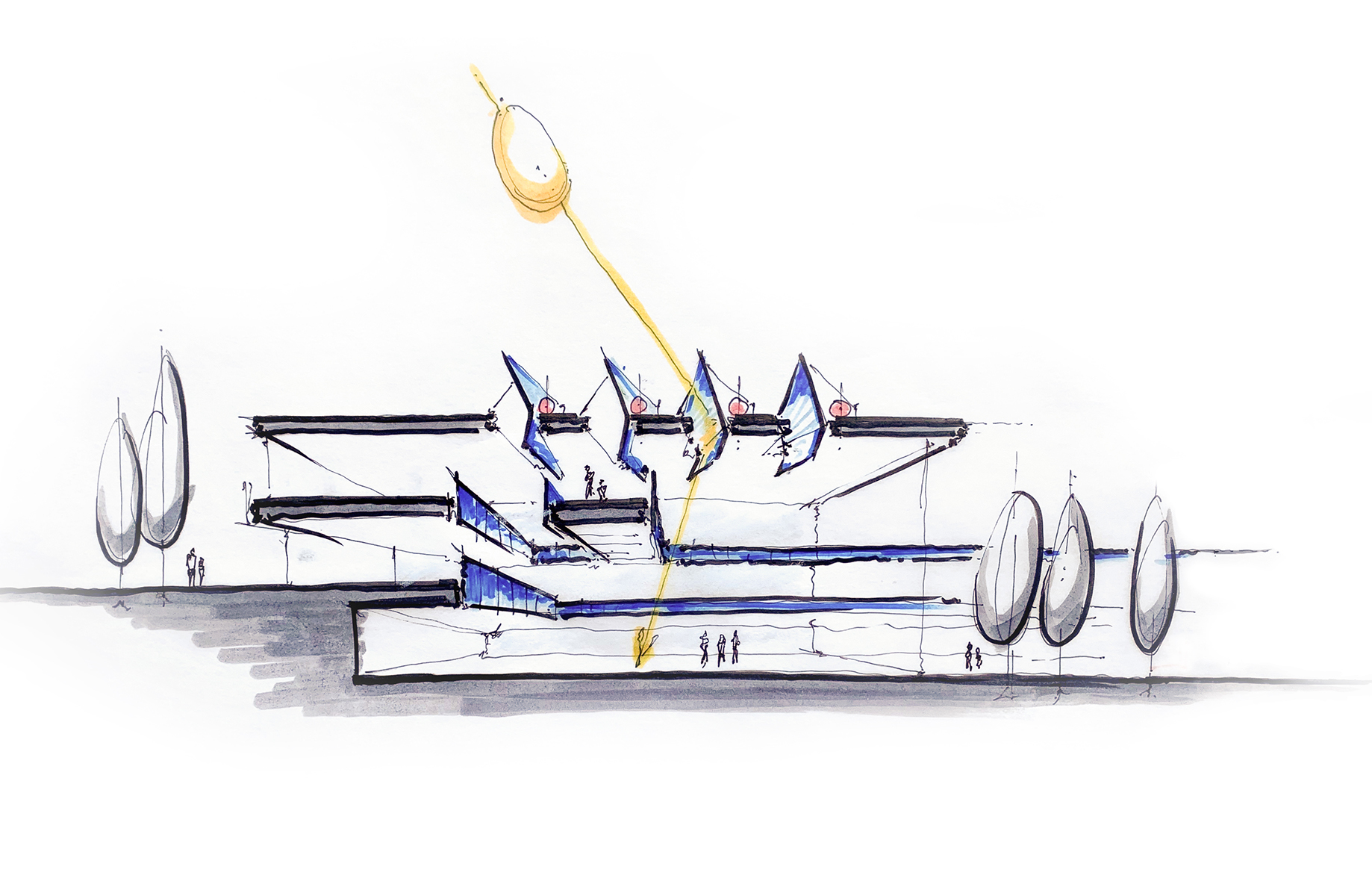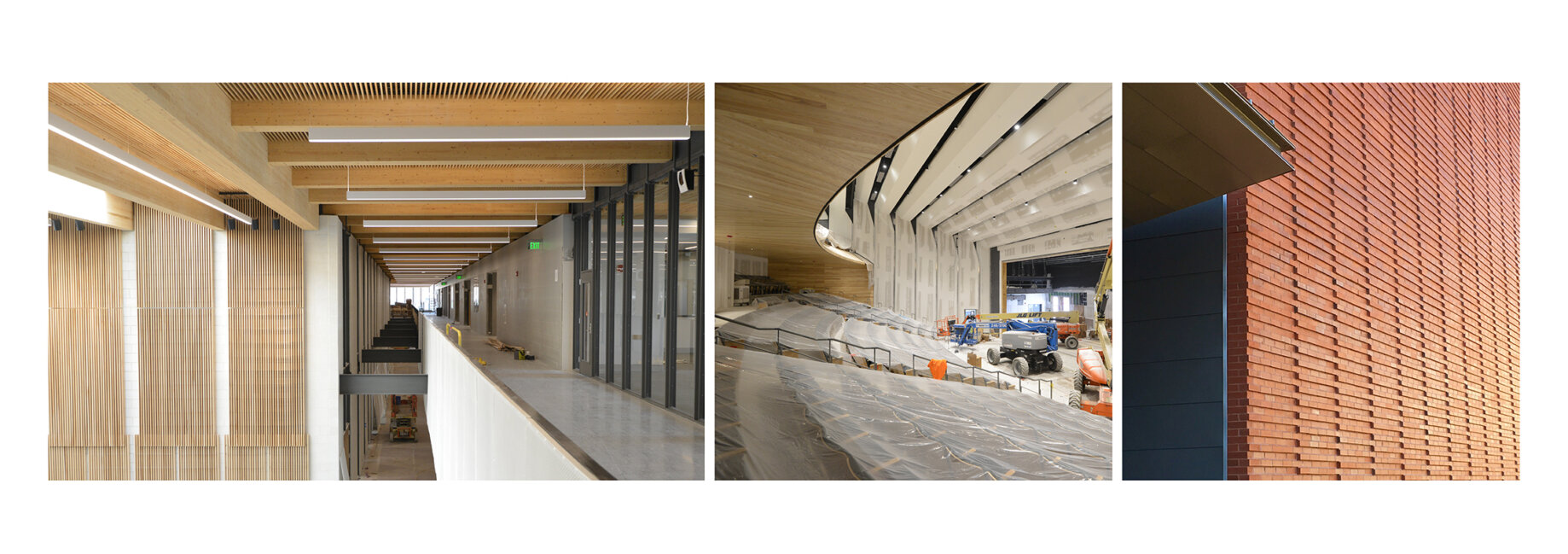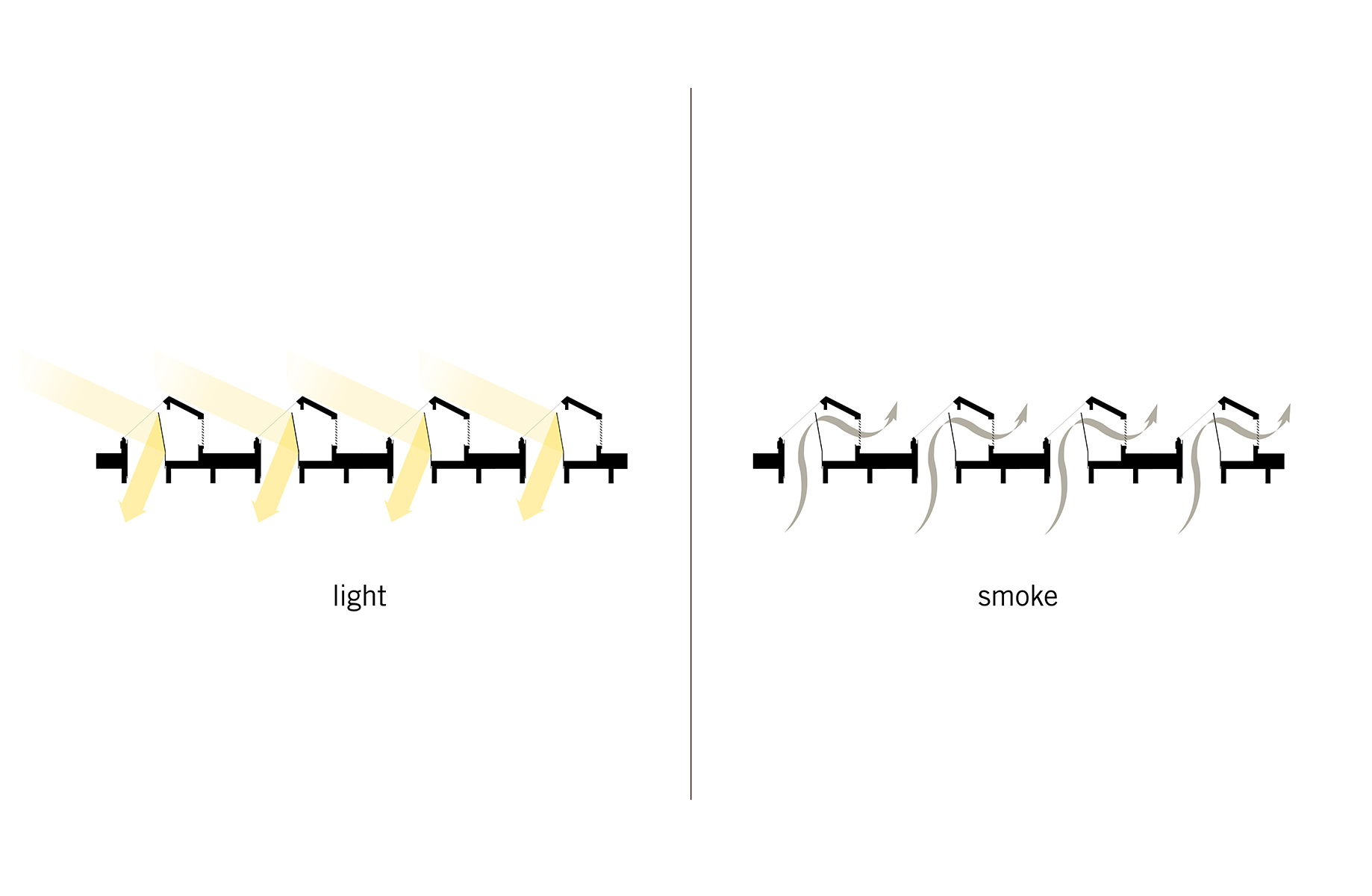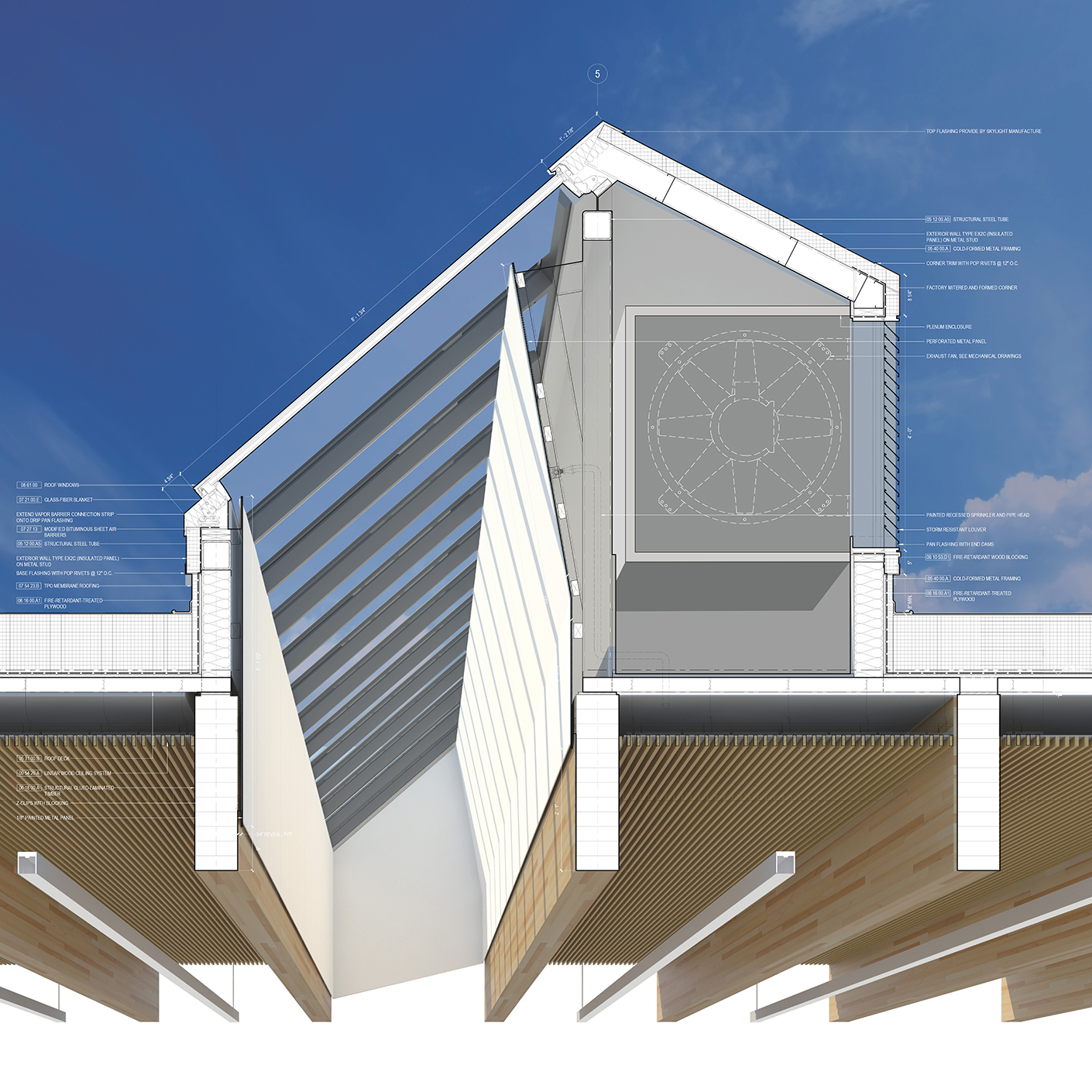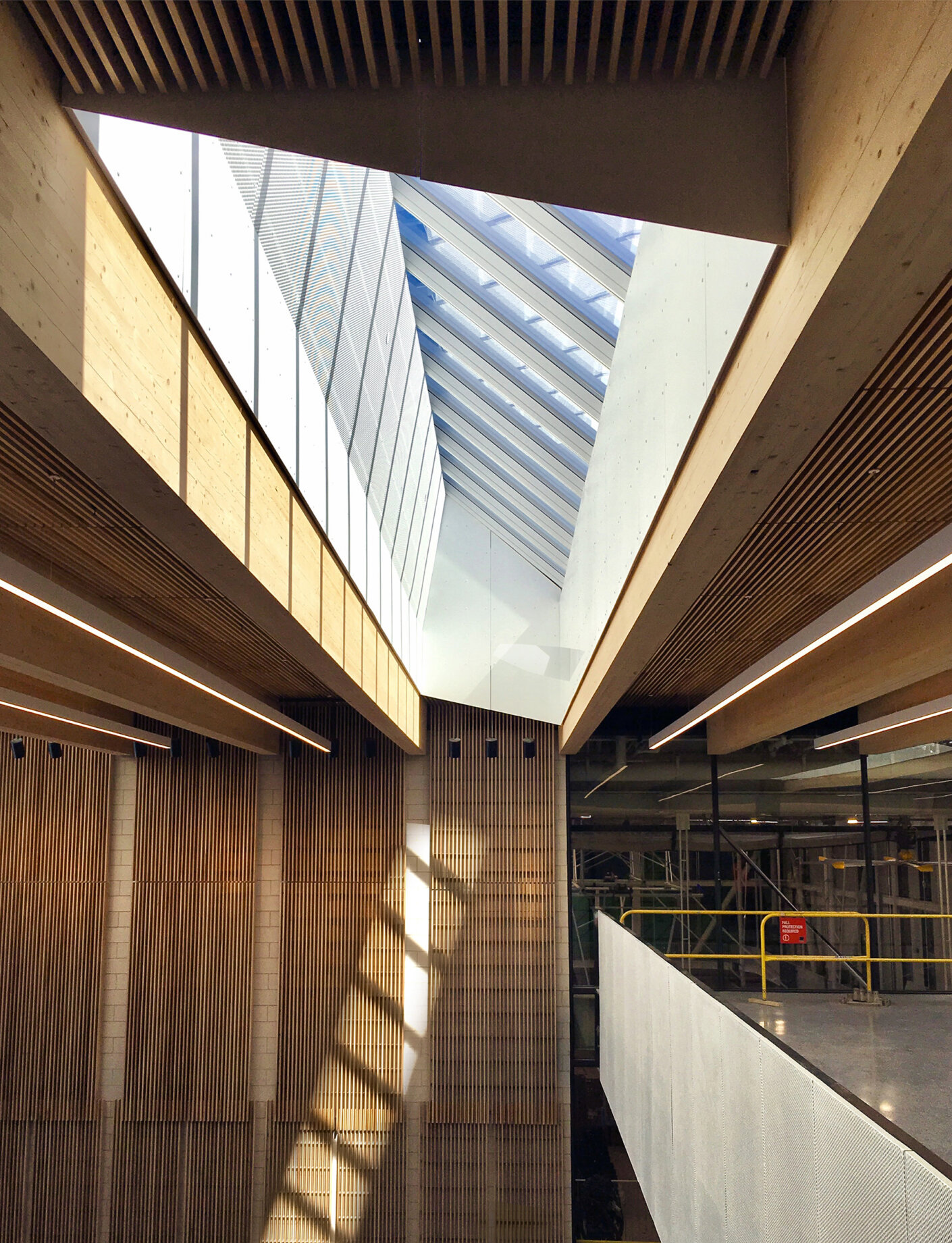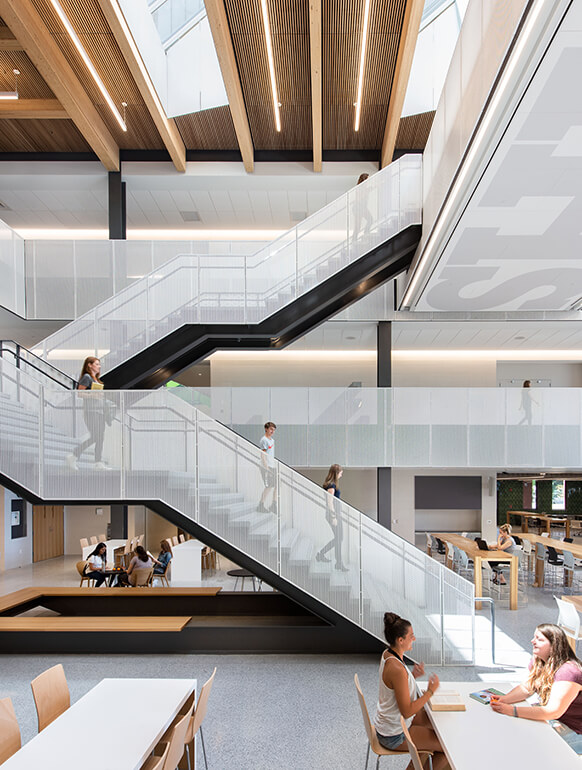The Transcendent Detail Competition is an annual firmwide competition that provides a platform to showcase the best technical design work produced by Perkins&Will. The focus of the competition is on a detail or collection of details that solve a design problem displaying both technical adroitness and beauty. The Billerica Memorial High School team was proud to enter this competition with a design solution that embodied the values of the firm at large, gathering expertise from our in-house experts, consultants, construction manager/subcontractors, owners project manager, and working as a team to produce a unique, beautiful solution to a challenging problem.
Billerica Memorial High School is a new high school constructed under the auspices of the Massachusetts School Building Authority at a cost of $172 million. It’s located in the historic Town of Billerica (just north of Boston)—a town with a long history extending back to the Revolutionary War, which garners great local pride. The town’s history has evolved from being an agricultural center through manufacturing and transportation in the 19th century to currently having a strong, forward-thinking technology presence.
Just like the town itself, Billerica Memorial High School has a long history of making things and is always a strong competitor in the robotics competitions that are held statewide. The programmatic vision for the school was one that married this history of making with an interest in sharing the experience of learning, such that pedagogical spaces favor openness and transparency.
